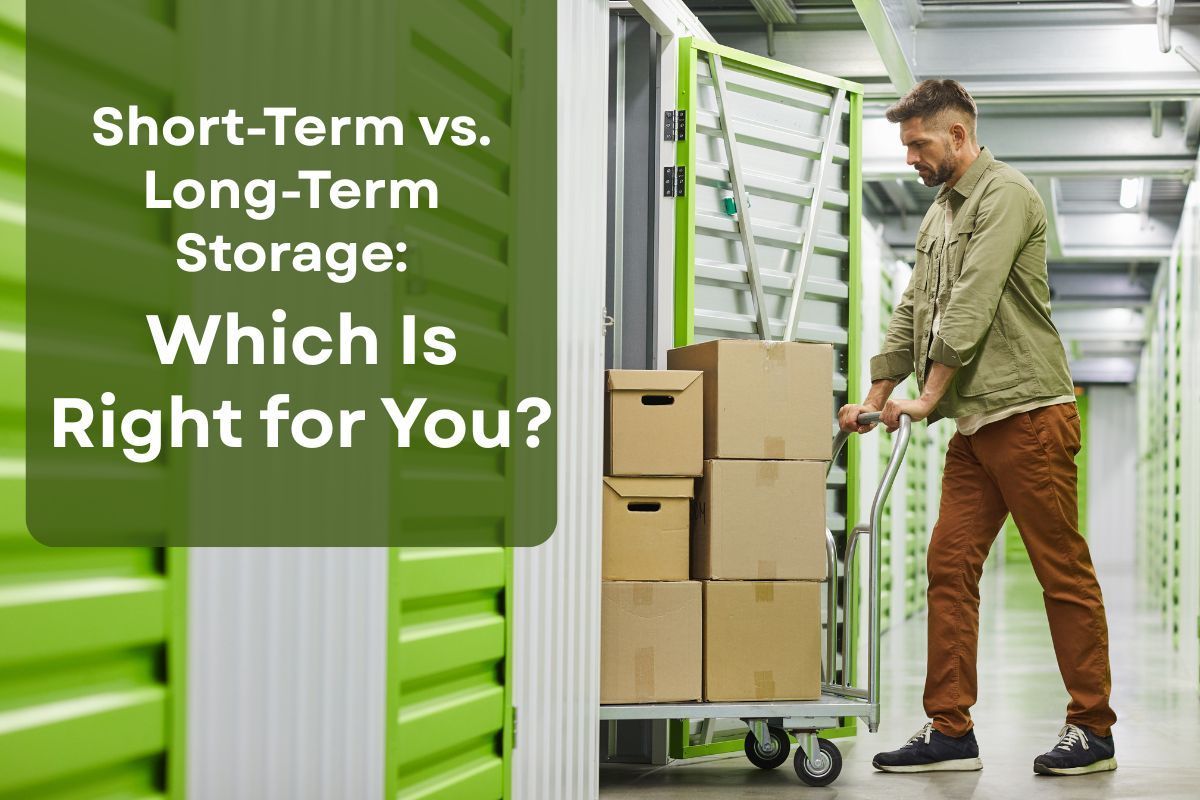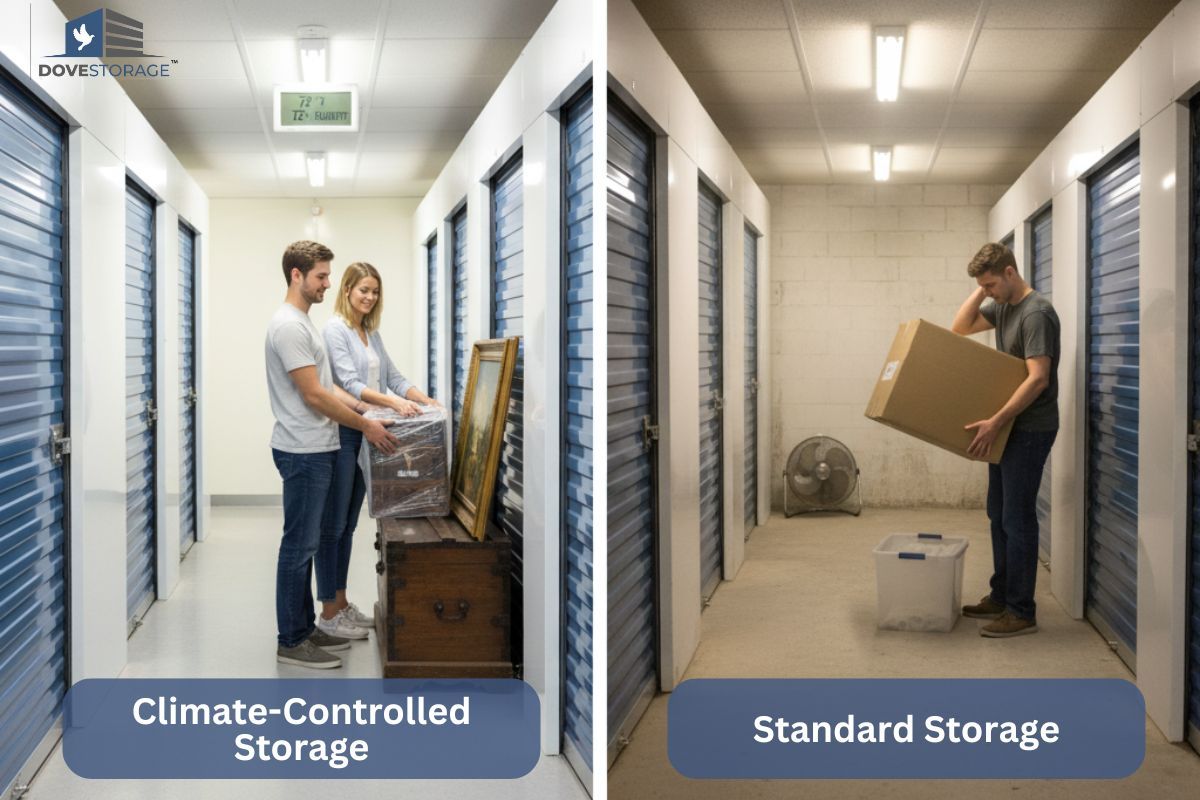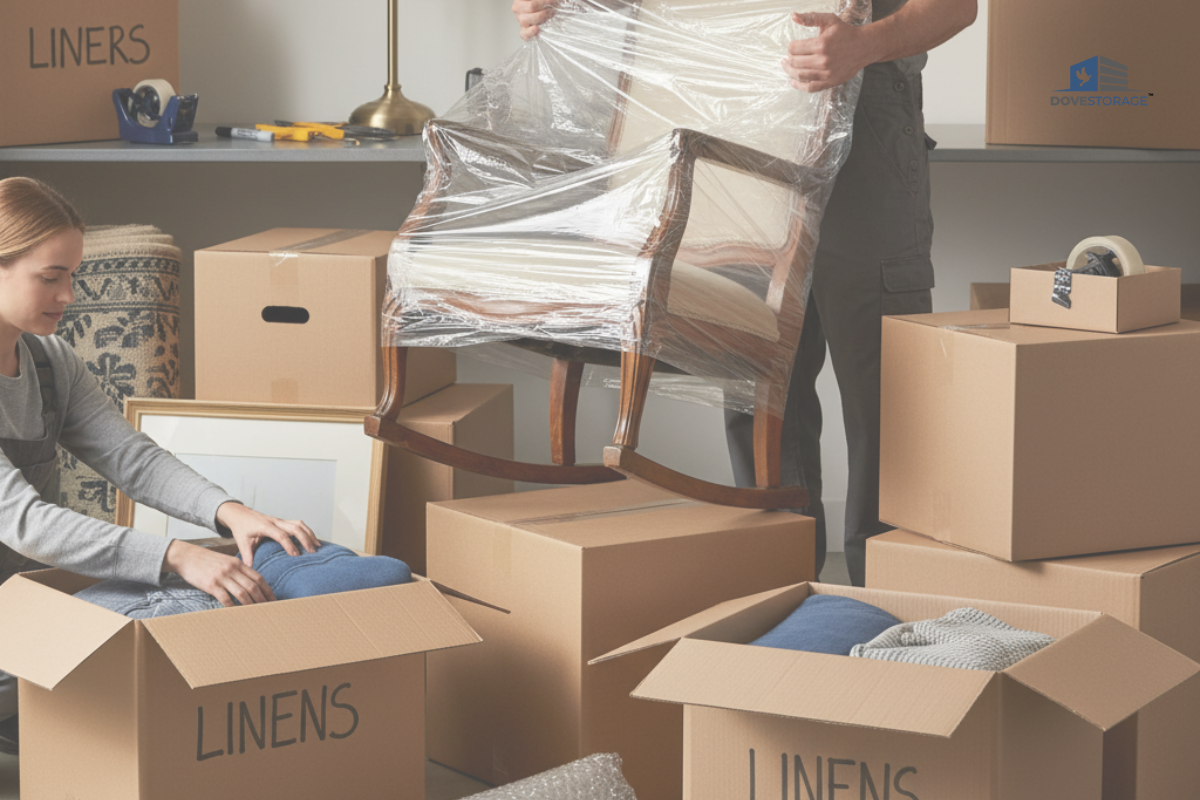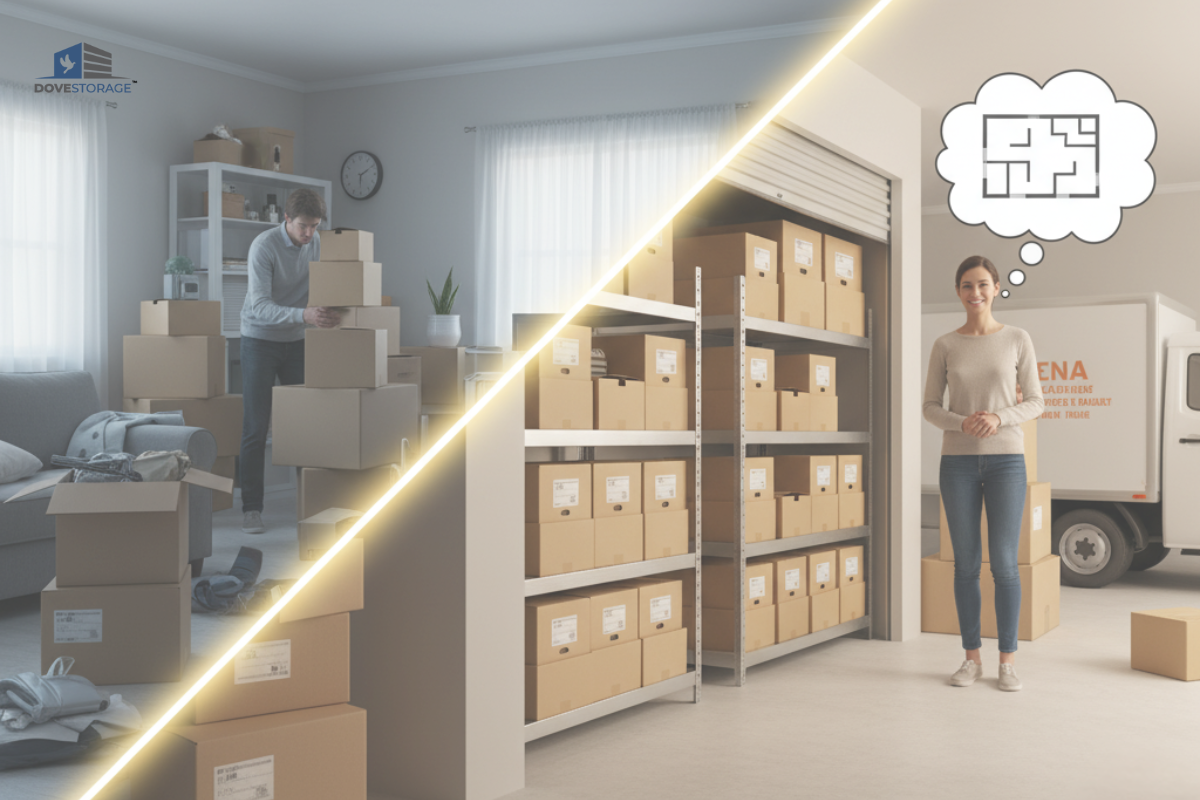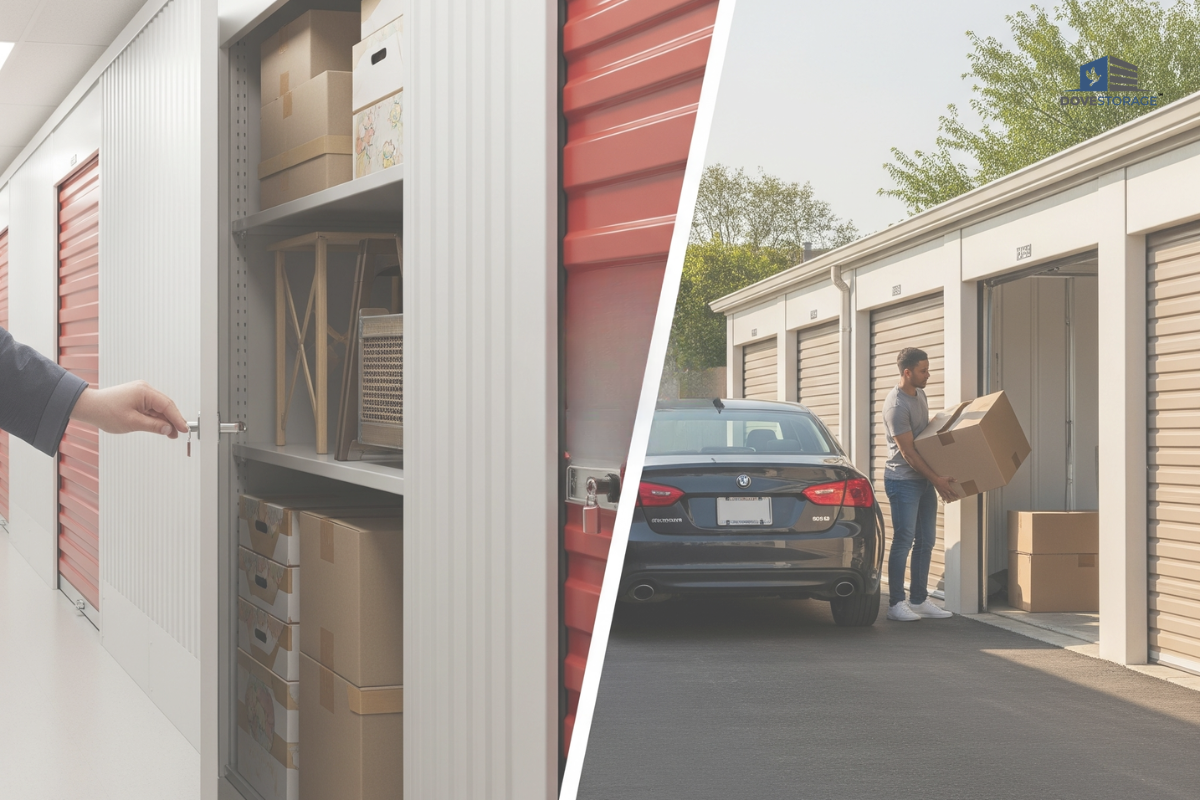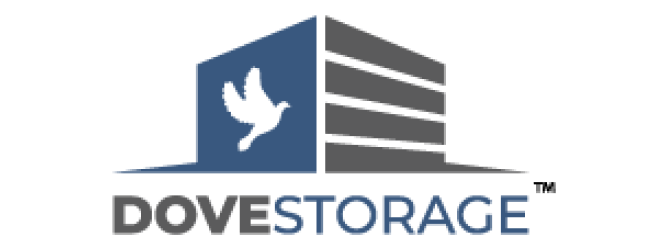How Do I Pack a Storage Unit Efficiently?
Packing a storage unit efficiently is crucial for maximizing space and ensuring that your items remain safe and easily accessible. Whether you're storing personal belongings, business inventory, or seasonal items, organizing your storage unit the right way can save you time, money, and frustration. In this guide, we'll walk you through the best strategies for packing your storage unit, including tips for maximizing space, keeping things organized, and ensuring your items stay protected.
1. Plan Ahead and Assess Your Needs -
Before you even begin packing your storage unit, it's important to plan ahead. Take inventory of everything you plan to store and consider the following:
Item Size and Shape: Larger items, such as furniture or appliances, require more space, while smaller items, like boxes and bins, can be stacked more easily.- Frequency of Access: If you need frequent access to certain items, make sure they are packed in a way that allows easy retrieval without disturbing the rest of your belongings.
- Climate Control: Consider whether your items are sensitive to temperature or humidity. If they are, you might need climate-controlled storage to protect them.
By taking stock of what you're storing, you can better organize your packing strategy.
2. Gather the Right Packing Supplies - The key to an efficient storage unit is having the right packing supplies. Here's a list of materials you'll need:
- Sturdy Boxes: Choose various sizes of sturdy boxes to fit your belongings. Make sure they are not too heavy and can be stacked easily.
- Packing Tape: High-quality tape will secure boxes and prevent them from opening during transport or storage.
- Bubble Wrap and Packing Paper: These materials will help protect fragile items like glassware, electronics, and artwork.
- Stretch Wrap: Great for securing furniture, appliances, and other large items to prevent them from getting scratched or damaged.
- Plastic Bins: For items that you want to protect from dust or moisture, clear plastic bins are an excellent option.
- Furniture Covers and Blankets: Use covers or moving blankets to protect furniture and other large items from dirt, dust, and damage.
By investing in these materials, you'll ensure that your items are packed securely and safely.
3. Maximize Vertical Space - When packing a storage unit, the goal is to make the most of the available space. One of the best ways to do this is by maximizing vertical space. Instead of stacking items haphazardly, think about how you can use the height of the storage unit effectively.
- Stack Boxes: Stack your boxes from the floor to the ceiling, with the heaviest items at the bottom and lighter ones on top. This helps to avoid crushing fragile items and makes it easier to organize.
- Utilize Shelving Units: If your storage facility allows it, consider bringing in shelves. This will help you keep things off the floor, allowing you to store more items in the same space.
- Disassemble Large Items: For items like furniture, disassemble them when possible. This will help you save a lot of space and make it easier to store them in the unit.
4. Keep Frequently Used Items Accessible -
If you anticipate needing access to certain items while they are in storage, pack those items in a way that makes them easy to retrieve. Here’s how:
- Place Accessible Items at the Front: Items that you need often, like seasonal clothing, important documents, or frequently used tools, should be placed near the front of the unit for easy access.
- Label Everything Clearly: Clearly label each box and bin with its contents. You can use color-coded labels or create an inventory list to make locating items easier.
- Leave a Pathway: If you have multiple large items stored, make sure there is a clear pathway to access them. Avoid stacking boxes or bins in front of bulky items you might need to access.
5. Use Furniture as Storage -
Furniture pieces can take up a lot of space, but they can also serve as valuable storage opportunities. Here's how to utilize them effectively:
- Use the Inside of Furniture: For items that are small or fragile, store them inside larger furniture pieces, such as couches, dressers, or cabinets. This is especially useful for items like pillows, blankets, or smaller boxes.
- Protect Furniture with Covers: Before storing furniture in your unit, protect it with moving blankets, plastic covers, or stretch wrap to prevent damage from dust, moisture, or scratches.
6. Avoid Overpacking Boxes -
While it might seem tempting to pack as much as possible into each box, this can lead to problems. Overpacked boxes are more likely to break, and it can be hard to access items without making a mess. Instead, follow these tips:
- Don’t Overfill Boxes: Leave a little extra room at the top of each box so that they can be sealed securely. This also allows you to add extra padding if needed.
- Evenly Distribute Weight: Ensure that weight is evenly distributed within boxes. Heavy items should be packed in smaller boxes, while lighter items can go in larger boxes.
7. Protect Fragile Items -
If you are storing fragile or valuable items, extra care is required to ensure their safety. Use the following strategies:
- Wrap Fragile Items Individually: Use bubble wrap, packing paper, or foam peanuts to protect delicate items like glass, porcelain, or electronics.
- Label Boxes with Fragile Items: Mark boxes that contain fragile items with “FRAGILE” labels so that anyone handling them knows to take extra care.
- Place Fragile Items at the Top: Store fragile items on top of heavier, more durable items to reduce the risk of damage.
8. Keep a Detailed Inventory -
One of the best ways to stay organized is by maintaining an inventory of your stored items. This can save you time when you need to find something in your storage unit. You can create a list on paper or digitally with photos and descriptions of each item. Be sure to update the list if you add or remove anything.
Packing a storage unit efficiently requires careful planning, the right materials, and strategic organization. By taking the time to think ahead, gather the necessary supplies, and use space wisely, you can ensure that your items are safe, accessible, and well-organized during their time in storage.
At
Dove Storage, we understand how important it is to make the most of your storage space, and we’re here to help. Whether you're moving, decluttering, or storing business inventory, our flexible and secure storage solutions are designed to meet your needs.
Contact us
today or visit our
website to learn more about how we can assist you with your storage requirements. Let us help you store your belongings with ease and efficiency!
